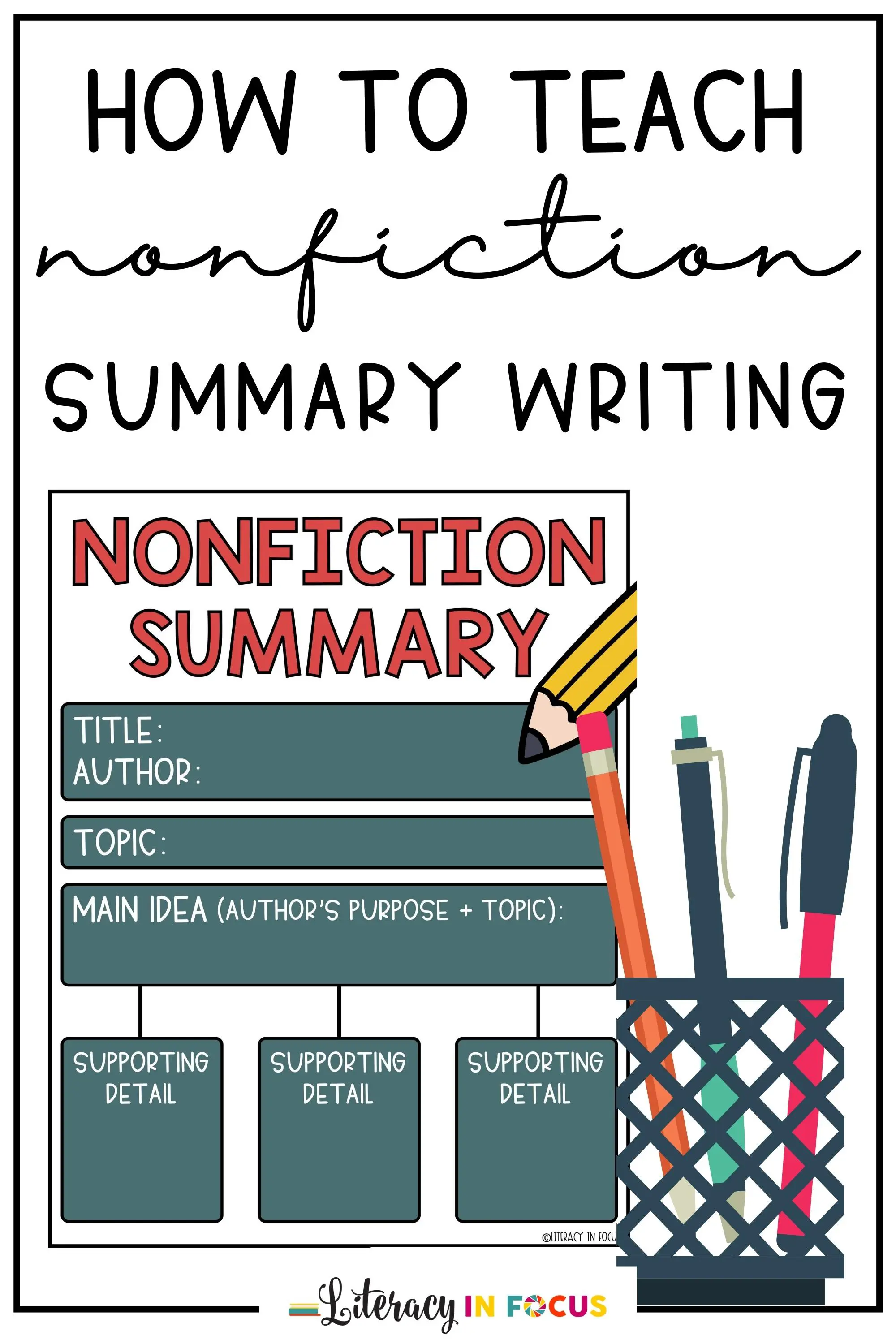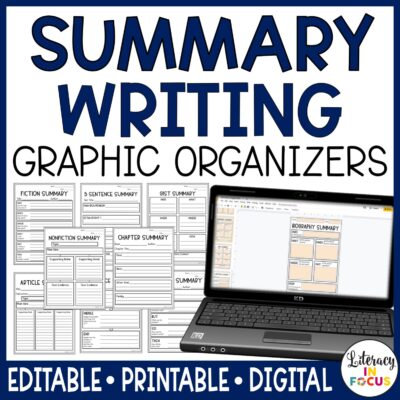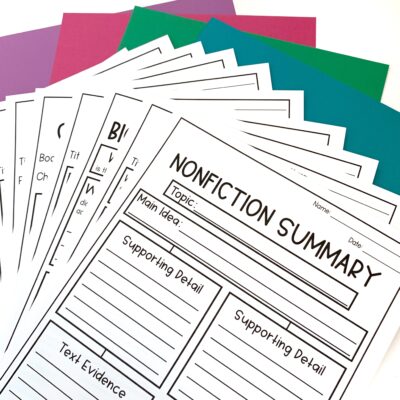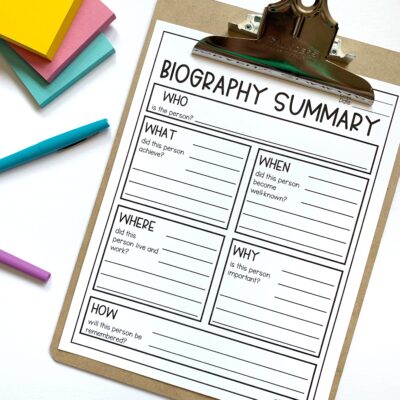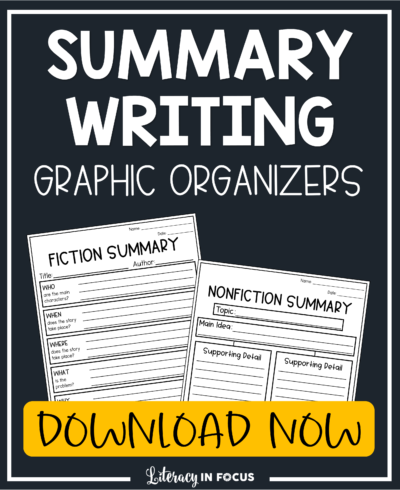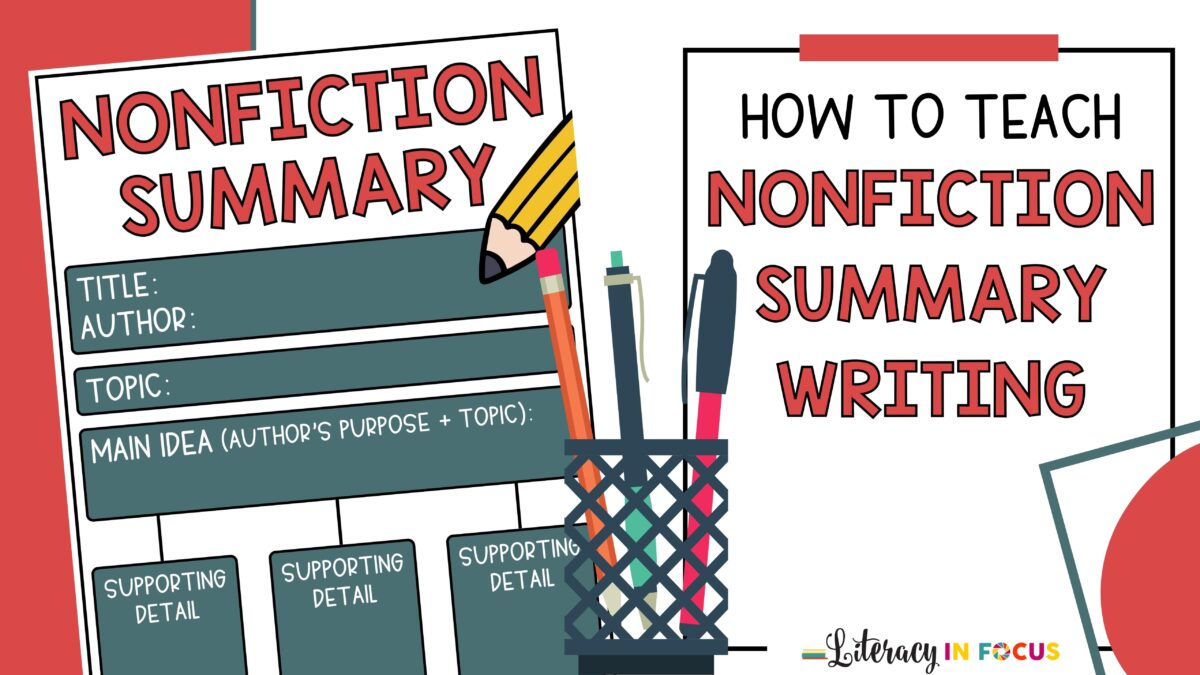
Teaching Nonfiction Summary Writing
Do your students have trouble deciding what to include when summarizing nonfiction text? Many students struggle with summarizing informational text because they don’t know how to identify the main idea and details. This can make the writing process extremely overwhelming.
If this sounds familiar, you can scaffold the writing process to make summarizing nonfiction a successful experience for all students. Use an anchor chart, graphic organizer, or writing template to break down the process. This will help students identify the necessary elements for their summary. Soon, they will be able to summarize nonfiction text without scaffolding!
Characteristics of a Nonfiction Summary
Before you teach your students a specific strategy for summarizing nonfiction texts, it’s helpful to review the characteristics of a summary. Here are five things students should keep in mind when writing a summary:
- Use your own words
- Keep it short (one paragraph)
- Include the title and author
- Clearly state the main idea
- Support the main idea with details
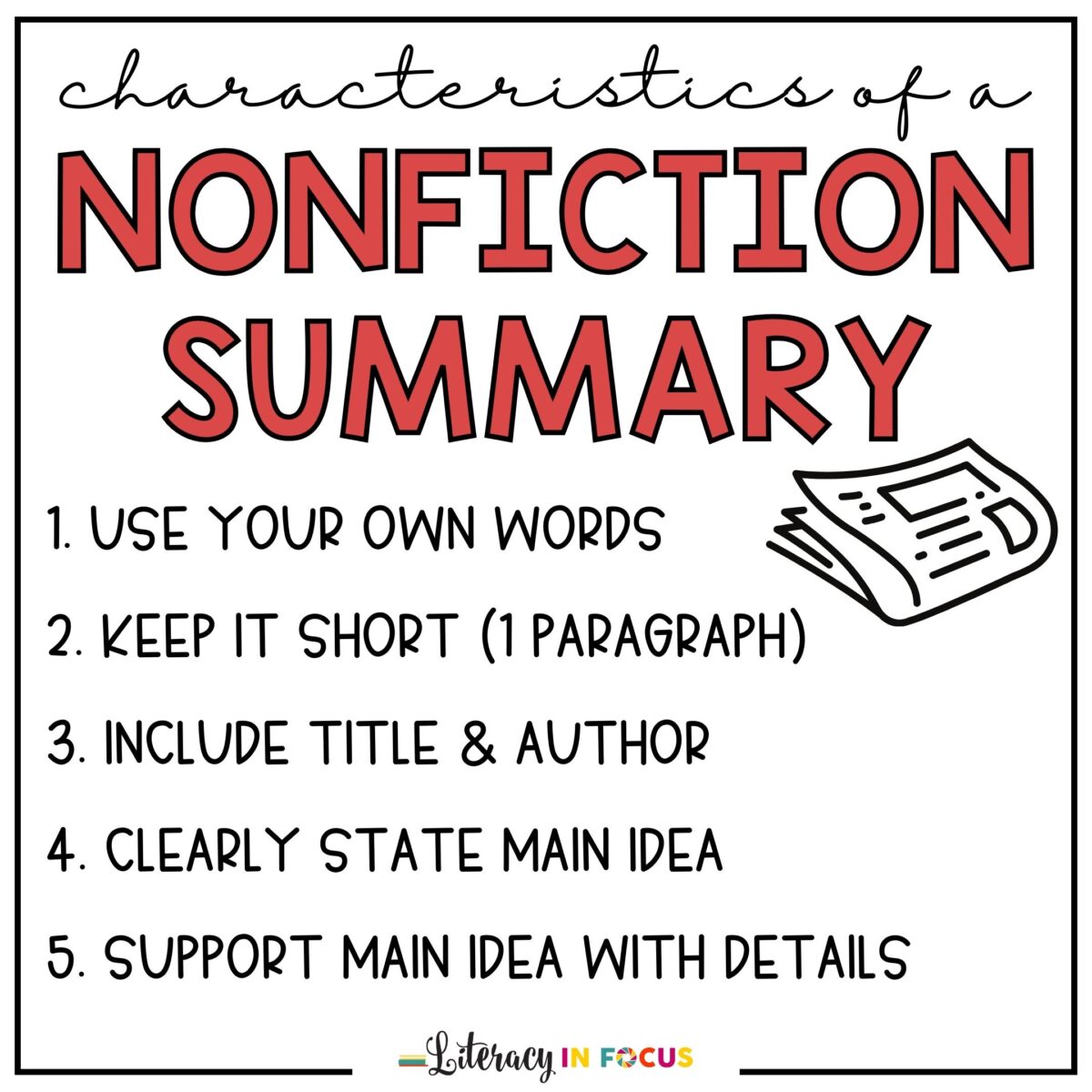
The anchor chart below is effective for teaching students to write a nonfiction summary because students can follow the sequencing to write their summary paragraph. In this way, the anchor chart is similar to a graphic organizer.
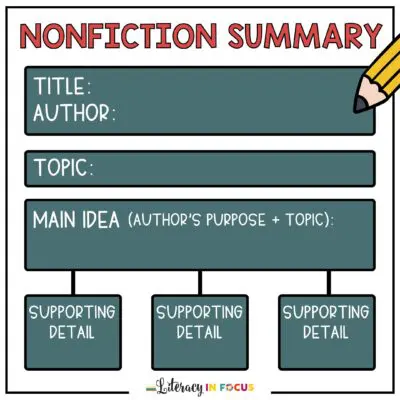
Here’s an example:
“Golden State Landscapes” by Peter Nguyen describes the geography of California. First, the Sierra Nevada mountain range runs along the eastern part of the state. Next, the center of the state is filled with miles of rich farmland. Finally, the Pacific Ocean creates California’s western border. In summary, “Golden State Landscapes” describes California’s geography.
If students need additional support, add instructional scaffolding with a close paragraph that aligns with the anchor chart. This will give students practice with the format until they can write a nonfiction summary independently.
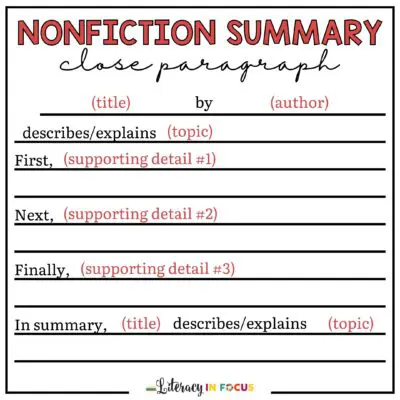
Make summary writing easier for your students with graphic organizers for specific text types. Click the link below to get 10 editable graphic organizers for summary writing!
Summary Writing Graphic Organizers
“This was a great resource for my students. With this activity, I was able to differentiate and meet each learner’s needs.” -Kellan T.
Want strategies for teaching fiction summary writing? Click here to see strategies you can use to teach students how to write effective narrative summaries.
